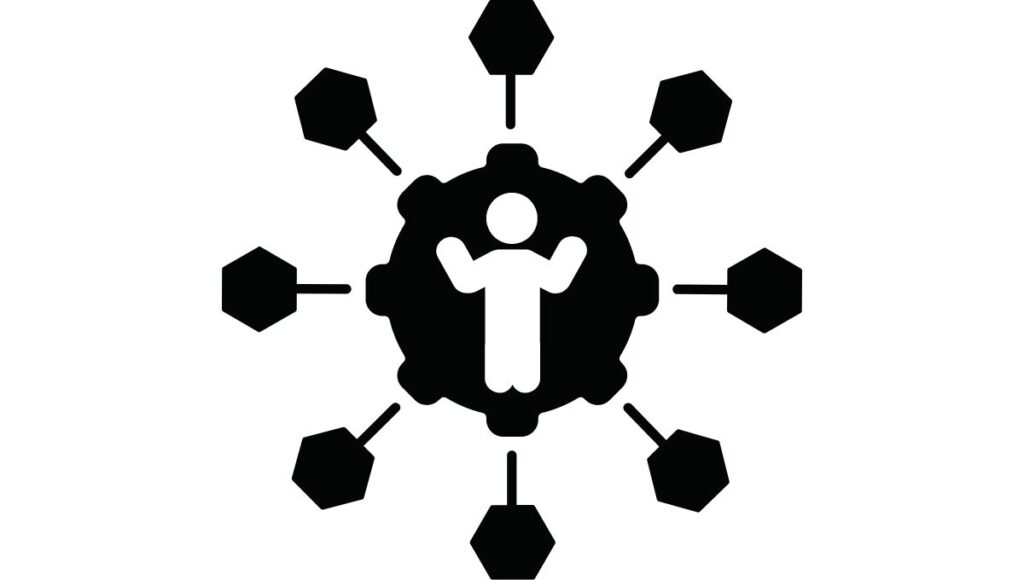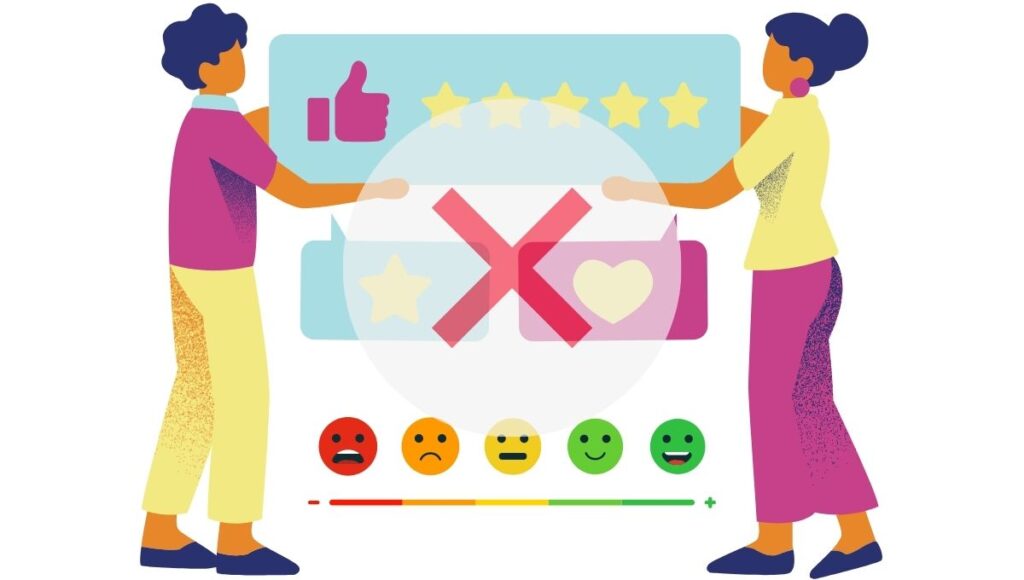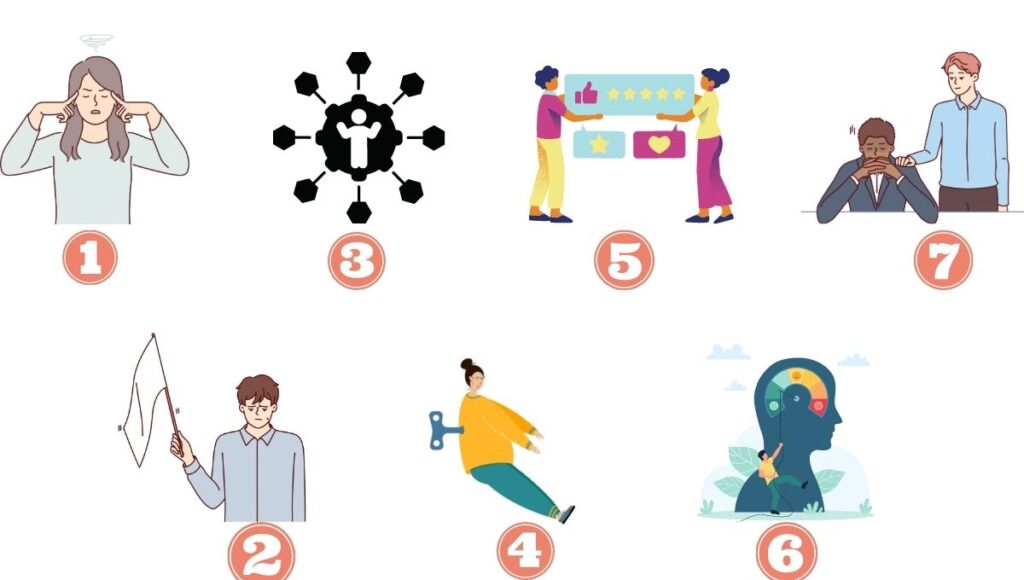Goal setting: 7 reasons why people fail and how to avoid it to be successful.

Do you have goals in your life? 🤔 Do you want to achieve something meaningful and fulfilling? 🙌 Do you want to improve yourself and your situation? 💯 If you answered yes to any of these questions, then you are not alone. Many people have goals in their life, whether personal or professional, big or small, short-term or long-term. Goals are the dreams and aspirations that we have for ourselves and our future. 😊
But having goals is not enough. You also need to work towards them and make them happen. Unfortunately, many people fail at goal setting and end up feeling frustrated, disappointed, and discouraged. 😢 They either give up on their goals or never reach them. Why is that? What are the common reasons why people fail at goal setting and how can you avoid them? 🤷♂️
In this article, we will explore 7 reasons why people fail at goal setting and how to avoid them. We will also share some tips and strategies on how to set smart, realistic, and achievable goals that will help you succeed in life. 🚀 By the end of this article, you will have a better understanding of the importance, benefits, and value of goal setting and how to do it right. 🙌
Let’s get started! 😊
Reason 1: Lack of clarity in Goal setting

One of the most common reasons why people fail at goal setting is that they have vague or unrealistic goals. Having vague or unrealistic goals can lead to confusion, frustration, and disappointment. For example, if your goal is to “be more productive”, how will you know if you are achieving it? What does being more productive mean to you? How will you measure it? How will you know when you have reached it?
A vague or unrealistic goal is like a destination without a map. You don’t know where you are going, how to get there, or how long it will take. You may end up wandering aimlessly, wasting time and resources, or giving up altogether.
That’s why it is important to have clear and realistic goals that are well-defined and attainable. A clear and realistic goal is like a destination with a map. You know where you are going, how to get there, and how long it will take. You can plan your route, track your progress, and celebrate your achievements.
One way to make your goals clear and realistic is to use the SMART criteria in goal setting that we discussed earlier. SMART goals are Specific, Measurable, Achievable, Relevant, and Time-bound. Let’s see how applying these criteria in goal setting can transform a vague or unrealistic goal into a clear and realistic one.
Example of a vague or unrealistic goal: I want to be more productive.
Example of a clear and realistic goal in goal setting: I want to complete 10 tasks from my to-do list every day for the next month.
How is this goal SMART?
– Specific: It states exactly what needs to be accomplished (completing 10 tasks from the to-do list) and who is responsible for it (I).
– Measurable: It has a quantifiable indicator of progress and success (the number of tasks completed).
– Achievable: It is challenging but not impossible to achieve (assuming the tasks are reasonable and manageable).
– Relevant: It aligns with the overall purpose and value of the goal-setter (assuming being more productive is important and beneficial for them).
– Time-bound: It has a clear deadline or timeframe for completion (the next month).
As you can see, using the SMART criteria in goal setting can help you create clear and realistic goals that will guide you towards success. By having clear and realistic goals, you will be able to focus your efforts, monitor your results, and adjust your actions if needed. You will also be able to avoid confusion, frustration, and disappointment that come from having vague or unrealistic goals.
Tips on how to set SMART goals:
– Use positive and affirmative language when stating your goals. For example, instead of saying “I don’t want to be late for work anymore”, say “I want to arrive at work on time every day”.
– Be as specific as possible when defining your goals. Use numbers, percentages, dates, names, locations, etc. to describe what you want to achieve.
– Break down your big or long-term goals into smaller or short-term goals that are easier to manage and measure. For example, if your goal is to write a book in a year, break it down into monthly or weekly goals such as writing a certain number of words or chapters.
– Make sure your goals are realistic and attainable based on your current situation, resources, skills, and abilities. Don’t set yourself up for failure by setting goals that are too high or too low.
– Make sure your goals are relevant and meaningful to you and your values, interests, and aspirations. Don’t set goals that are imposed by others or that don’t align with your purpose.
– Set a deadline or timeframe for each of your goals and stick to it. Having a sense of urgency will motivate you to take action and keep you on track.
To summarize, one of the reasons why people fail at goal setting is that they have vague or unrealistic goals that lead to confusion, frustration, and disappointment. To avoid this pitfall, you should set clear and realistic goals that are SMART: Specific, Measurable, Achievable, Relevant, and Time-bound. By doing so, you will be able to focus your efforts, monitor your results, and adjust your actions if needed. You will also be able to achieve your goals faster and easier.
Reason 2: Lack of motivation

Another common reason why people fail at goal setting is that they have low or no motivation. Having low or no motivation can lead to boredom, apathy, and inertia. For example, if your goal is to “learn a new skill”, but you don’t have any interest, passion, or enthusiasm for it, how will you find the energy, time, and resources to pursue it? What will keep you going when you face challenges, obstacles, or setbacks?
A low or no-motivation goal is like a car without fuel. You can’t start it, move it, or reach your destination. You may end up stuck in the same place, doing the same thing, or doing nothing at all.
That’s why it is important to have high and consistent motivation that drives you to achieve your goals. Having high and consistent motivation can lead to excitement, curiosity, and action. For example, if your goal is to “learn a new skill” and you have a strong interest, passion, or enthusiasm for it, you will find the energy, time, and resources to pursue it. You will also keep going when you face challenges, obstacles, or setbacks.
A high and consistent motivation goal is like a car with fuel. You can start it, move it, and reach your destination. You may end up exploring new places, doing new things, or doing more than you expected.
One way to increase your motivation is to find your why and align your goals with your values and purpose. Finding your why means understanding the reason behind your goals and how they relate to your values and purpose. Aligning your goals with your values and purpose means choosing goals that are meaningful and fulfilling to you and that contribute to something bigger than yourself.
Finding your why and aligning your goals with your values and purpose can help you create high and consistent motivation that drives you to achieve your goals. By having high and consistent motivation in goal setting, you will be able to overcome boredom, apathy, and inertia. You will also be able to enjoy the process and the outcome of your goals.
Example of a low or no motivation goal: I want to learn a new skill because my boss told me to.
Example of a high and consistent motivation goal: I want to learn a new skill because I am passionate about it and it will help me advance my career.
How is this goal motivated?
– Finding your why: The reason behind the goal in goal setting is not external (my boss told me to) but internal (I am passionate about it). The goal-setter has a personal interest, passion, or enthusiasm for the goal that motivates them to pursue it.
– Aligning your values and purpose: The goal in goal setting is not irrelevant (my boss told me to) but relevant (it will help me advance my career). The goal-setter has a personal value (career advancement) or purpose (contributing to their field) that motivates them to pursue it.
As you can see, finding your why and aligning your values and purpose can help you create high and consistent motivation that drives you to achieve your goals after setting. By having high and consistent motivation, you will be able to overcome boredom, apathy, and inertia. You will also be able to enjoy the process and the outcome of your goals.
Tips on how to find your why and align your values and purpose:
– Ask yourself why you want to achieve your goals before goal setting. What are the benefits, rewards, or outcomes that you expect from them? How do they relate to your values, interests, aspirations, or passions?
– Ask yourself before goal setting how your goals contribute to something bigger than yourself. What are the impacts, influences, or changes that you want to make in yourself, others, or the world? How do they relate to your purpose, vision, or mission?
– Write down your answers and review them regularly. Remind yourself of the reasons behind your goals and how they align with your values and purpose.
– Seek inspiration from others who have achieved similar or related goals. Learn from their stories, experiences, or advice on goal setting. How did they find their why and align their values and purpose? How did they overcome challenges, obstacles, or setbacks? How did they celebrate their achievements?
– Share your goals with others who support you and hold you accountable. Tell them about your why and how it aligns with your values and purpose. Ask them for feedback, encouragement, or assistance. Celebrate your progress and achievements with them.
To summarize, another reason why people fail at goal setting is that they have low or no motivation which leads to boredom, apathy, and inertia. To avoid this pitfall, you should find your why and align your values and purpose that create high and consistent motivation that drives you to achieve your goals. By doing so, you will be able to overcome boredom, apathy, and inertia. You will also be able to enjoy the process and the outcome of your goals.
Reason 3: Lack of resources

Another common reason why people fail at goal setting is that they have lack of resources. Having a lack of resources can lead to stress, anxiety, and frustration. For example, if your goal is to “start a business”, but you don’t have enough money, time, skills, or equipment to do it, how will you make it happen? What will you do when you face financial, technical, or legal challenges?
A lack of resources goal is like a cake without ingredients. You can’t bake it, decorate it, or eat it. You may end up with nothing, a mess, or a disaster.
That’s why it is important to have sufficient and appropriate resources that support you to achieve your goals. Having sufficient and appropriate resources can lead to confidence, security, and satisfaction. For example, if your goal is to “start a business” and you have enough money, time, skills, or equipment to do it, you will be able to make it happen. You will also be able to handle financial, technical, or legal challenges.
A sufficient and appropriate resource goal is like a cake with ingredients. You can bake it, decorate it, and eat it. You may end up with a delicious, beautiful, and satisfying cake.
One way to ensure that you have sufficient and appropriate resources is to conduct a SWOT analysis before setting your goals. A SWOT analysis is a tool that helps you identify your Strengths, Weaknesses, Opportunities, and Threats related to your goals. By doing a SWOT analysis, you can assess your current situation, resources, skills, and abilities and determine what you need to improve or acquire to achieve your goals.
Conducting a SWOT analysis can help you ensure that you have sufficient and appropriate resources that support you to achieve your goals. By having sufficient and appropriate resources, you will be able to overcome stress, anxiety, and frustration. You will also be able to achieve your goals faster and easier.
Example of a lack of resources goal: I want to start a business without any money, time, skills, or equipment.
Example of a sufficient and appropriate resource goal: I want to start a business with enough money, time, skills, and equipment.
How is this goal resourced?
– Conducting a SWOT analysis: The goal-setter has done a SWOT analysis before setting their goal and has identified their strengths (such as creativity, passion, or network), weaknesses (such as lack of money, time, skills, or equipment), opportunities (such as market demand, customer feedback, or funding sources), and threats (such as competition, regulation, or risk). Based on their SWOT analysis, they have decided what they need to improve or acquire (such as money, time, skills, or equipment) to achieve their goal.
– Having sufficient and appropriate resources: The goal-setter has enough money (such as savings, loans, or grants), time (such as flexible schedule or dedicated hours), skills (such as training or education), and equipment (such as tools or software) to start their business. They also have contingency plans in case of unexpected challenges.
As you can see, conducting a SWOT analysis can help you ensure that you have sufficient and appropriate resources that support you to achieve your goals. By having sufficient and appropriate resources, you will be able to overcome stress, anxiety, and frustration. You will also be able to achieve your goals faster and easier.
Tips on how to conduct a SWOT analysis:
– Use a simple matrix or table with four quadrants: Strengths (top left), Weaknesses (top right), Opportunities (bottom left), and Threats (bottom right).
– List down all the factors that affect your goals in each quadrant. Be honest and realistic about your strengths and weaknesses. Be optimistic and proactive about your opportunities and threats.
– Analyze the factors in each quadrant and prioritize them based on their importance and urgency. Focus on the most critical and relevant factors for your goals.
– Use the factors in each quadrant to create strategies for achieving your goals. For example:
– Use your strengths to take advantage of your opportunities.
– Use your strengths to overcome your threats.
– Improve your weaknesses to take advantage of your opportunities.
– Improve your weaknesses to overcome your threats.
– Review your SWOT analysis regularly and update it as needed. Adjust your strategies according to the changes in your situation.
To summarize, another reason why people fail at goal setting is that they lack resources which leads to stress, anxiety, and frustration. To avoid this pitfall, you should conduct a SWOT analysis that ensures that you have sufficient and appropriate resources that support you to achieve your goals. By doing so, you will be able to overcome stress, anxiety, and frustration. You will also be able to achieve your goals faster and easier.
Reason 4: Lack of action

Another common reason why people fail at goal setting is that they have no or insufficient action. Having no or insufficient action can lead to stagnation, procrastination, and failure. For example, if your goal is to “lose weight”, but you don’t exercise, eat healthily, or change your habits, how will you achieve it? What will you do when you face temptations, distractions, or excuses?
A no or insufficient action goal is like a plane without wings. You can’t take off, fly, or land. You may end up sitting on the ground, watching others fly, or crashing.
That’s why it is important to have consistent and effective action that moves you toward your goals. Having consistent and effective action can lead to progress, momentum, and success. For example, if your goal is to “lose weight” and you exercise, eat healthy, and change your habits, you will achieve it. You will also be able to handle temptations, distractions, or excuses.
A consistent and effective action goal is like a plane with wings. You can take off, fly, and land. You may end up reaching new heights, seeing new sights, or landing at your destination.
One way to ensure that you have consistent and effective action is to create a plan and take steps towards your goals every day. Creating a plan means breaking down your goals into smaller and manageable tasks that you can accomplish in a specific time frame. Taking steps means doing something every day that brings you closer to your goals, no matter how small or big.
Creating a plan and taking steps can help you ensure that you have consistent and effective action that moves you towards your goals. By having consistent and effective action, you will be able to overcome stagnation, procrastination, and failure. You will also be able to achieve your goals faster and easier.
Example of a no or insufficient action goal: I want to lose weight without doing anything.
Example of a consistent and effective action goal: I want to lose weight by exercising for 30 minutes every day, eating a balanced diet of 1500 calories per day, and drinking 8 glasses of water per day.
How is this goal actionable?
– Creating a plan: The goal-setter has created a plan that breaks down their goal into smaller and manageable tasks that they can accomplish in a specific time frame. They have decided what they need to do (exercise, eat healthy, drink water), how much they need to do (30 minutes, 1500 calories, 8 glasses), and when they need to do it (every day).
– Taking steps: The goal-setter has taken steps towards their goal every day by following their plan. They have done something every day that brings them closer to their goal, no matter how small or big.
As you can see, creating a plan and taking steps can help you ensure that you have consistent and effective action that moves you towards your goals. By having consistent and effective action, you will be able to overcome stagnation, procrastination, and failure. You will also be able to achieve your goals faster and easier.
Tips on how to create a plan and take steps:
– Use a calendar or a planner to schedule your tasks and track your progress. Mark the dates and times when you need to do your tasks and check them off when you complete them.
– Use a journal or a notebook to record your thoughts and feelings about your goals and actions. Write down what you did, how you did it, why you did it, what you learned from it, what you enjoyed about it, what you struggled with, etc.
– Use a reward system or a gamification system to motivate yourself and celebrate your achievements. Give yourself a reward or a point for each task that you complete and use them to treat yourself or unlock new levels.
– Use an accountability partner or a support group to help you stay on track and overcome challenges. Find someone who shares your goals or supports your goals and communicate with them regularly. Share your plans, actions, results, feedback, encouragements, etc.
– Use an app or a tool that can help you plan and execute your tasks more efficiently and effectively. There are many apps or tools that can help you with different aspects of your goals such as time management, task management, habit formation, etc.
To summarize, another reason why people fail at goal setting is that they have no or insufficient action which leads to stagnation, procrastination, and failure. To avoid this pitfall, you should create a plan and take steps that ensure that you have consistent and effective action that moves you towards your goals. By doing so, you will be able to overcome stagnation, procrastination, and failure. You will also be able to achieve your goals faster and easier.
Reason 5: Lack of feedback

Another common reason why people fail at goal setting is that they have no or inaccurate feedback. Having no or inaccurate feedback can lead to ignorance, confusion, and disillusionment. For example, if your goal is to “improve your writing skills”, but you don’t measure, evaluate, or improve your writing performance, how will you know if you are making progress? What will you do when you face criticism, rejection, or praise?
A no or inaccurate feedback goal is like a mirror without reflection. You can’t see yourself, your strengths, or your weaknesses. You may end up unaware, misguided, or deluded.
That’s why it is important to have regular and reliable feedback that informs you about your goals. Having regular and reliable feedback can lead to awareness, clarity, and improvement. For example, if your goal is to “improve your writing skills” and you measure, evaluate, and improve your writing performance, you will know if you are making progress. You will also be able to handle criticism, rejection, or praise.
A regular and reliable feedback goal is like a mirror with reflection. You can see yourself, your strengths, and your weaknesses. You may end up aware, guided, or enlightened.
One way to ensure that you have regular and reliable feedback is to track and review your goals frequently and objectively. Tracking your goals means recording your actions, results, and outcomes related to your goals. Reviewing your goals means analyzing your data, comparing your performance, and identifying your gaps and opportunities.
Tracking and reviewing your goals can help you ensure that you have regular and reliable feedback that informs you about your goals. By having regular and reliable feedback, you will be able to overcome ignorance, confusion, and disillusionment. You will also be able to achieve your goals faster and easier.
Example of a no or inaccurate feedback goal: I want to improve my writing skills without measuring, evaluating, or improving my writing performance.
Example of a regular and reliable feedback goal: I want to improve my writing skills by measuring, evaluating, and improving my writing performance.
How is this goal feedback?
– Tracking your goals: The goal-setter has tracked their goals by recording their actions (such as writing a certain number of words or pages per day), results (such as getting a certain score or grade on their writing assignments), and outcomes (such as getting published or hired as a writer).
– Reviewing your goals: The goal-setter has reviewed their goals by analyzing their data (such as using charts or graphs to visualize their progress), comparing their performance (such as using benchmarks or standards to measure their quality), and identifying their gaps and opportunities (such as using feedback or suggestions to improve their skills).
As you can see, tracking and reviewing your goals can help you ensure that you have regular and reliable feedback that informs you about your goals. By having regular and reliable feedback, you will be able to overcome ignorance, confusion, and disillusionment. You will also be able to achieve your goals faster and easier.
Tips on how to track and review your goals:
– Use a spreadsheet or a dashboard to store and organize your data related to your goals. Include relevant information such as dates, times, actions, results, outcomes, etc.
– Use a scale or a rubric to measure and evaluate your performance related to your goals. Include relevant criteria such as quality, quantity, speed, accuracy, etc.
– Use a survey or a questionnaire to collect and analyze feedback related to your goals. Include relevant questions such as what went well, what went wrong, what can be improved, etc.
– Use a journal or a diary to reflect and learn from your experience related to your goals. Include relevant thoughts and feelings such as what you enjoyed, what you struggled with, what you learned, etc.
– Use an app or a tool that can help you track and review your goals more efficiently and effectively. There are many apps or tools that can help you with different aspects of your goals such as data collection, data analysis, data visualization, etc.
To summarize, another reason why people fail at goal setting is that they have no or inaccurate feedback which leads to ignorance, confusion, and disillusionment. To avoid this pitfall, you should track and review your goals that ensure that you have regular and reliable feedback that informs you about your goals. By doing so, you will be able to overcome ignorance, confusion, and disillusionment. You will also be able to achieve your goals faster and easier.
Reason 6: Lack of support

Another common reason why people fail at goal setting is that they have no or negative support. Having no or negative support can lead to isolation, discouragement, and sabotage. For example, if your goal is to “travel the world”, but you don’t have anyone who supports, encourages, or helps you, how will you cope with the challenges, risks, or costs? What will you do when you face loneliness, criticism, or opposition?
A no or negative support goal is like a boat without a crew. You can’t sail, navigate, or dock. You may end up stranded, lost, or sunk.
That’s why it is important to have positive and supportive relationships that boost your goals. Having positive and supportive relationships can lead to connection, encouragement, and assistance. For example, if your goal is to “travel the world” and you have someone who supports, encourages, or helps you, you will be able to cope with the challenges, risks, or costs. You will also be able to handle loneliness, criticism, or opposition.
A positive and supportive relationship goal is like a boat with a crew. You can sail, navigate, and dock. You may end up exploring, discovering, or arriving.
One way to ensure that you have positive and supportive relationships is to find and cultivate people who share or support your goals. Finding people who share or support your goals means looking for people who have similar or related goals as you or who are interested in or enthusiastic about your goals. Cultivating people who share or support your goals means building trust, rapport, and communication with them and exchanging feedback, encouragement, or assistance.
Finding and cultivating people who share or support your goals can help you ensure that you have positive and supportive relationships that boost your goals. By having positive and supportive relationships, you will be able to overcome isolation, discouragement, and sabotage. You will also be able to achieve your goals faster and easier.
Example of a no or negative support goal: I want to travel the world without anyone who supports, encourages, or helps me.
Example of a positive and supportive relationship goal: I want to travel the world with someone who supports, encourages, or helps me.
How is this goal supported?
– Finding people who share or support your goals: The goal-setter has found people who share or support their goals by looking for people who have similar or related goals as them (such as other travelers or adventurers) or who are interested in or enthusiastic about their goals (such as friends or family members).
– Cultivating people who share or support your goals: The goal-setter has cultivated people who share or support their goals by building trust, rapport, and communication with them (such as sharing their plans, experiences, or stories) and exchanging feedback, encouragement, or assistance (such as giving advice, compliments, or resources).
As you can see, finding and cultivating people who share or support your goals can help you ensure that you have positive and supportive relationships that boost your goals. By having positive and supportive relationships, you will be able to overcome isolation, discouragement, and sabotage. You will also be able to achieve your goals faster and easier.
Tips on how to find and cultivate people who share or support your goals:
– Use social media or online platforms to connect with people who share or support your goals. There are many social media or online platforms that can help you find people who have similar or related goals as you or who are interested in or enthusiastic about your goals. For example:
– Facebook groups
– Instagram hashtags
– Twitter chats
– Reddit forums
– LinkedIn groups
– YouTube channels
– Podcasts
– Blogs
– Online courses
– Use offline events or activities to meet with people who share or support your goals. There are many offline events or activities that can help you meet with people who have similar or related goals as you or who are interested in or enthusiastic about your goals. For example:
– Meetups
– Conferences
– Workshops
– Seminars
– Classes
– Clubs
– Teams
– Volunteering
– Use communication tools or methods to keep in touch with people who share or support your goals. There are many communication tools or methods that can help you keep in touch with people who have similar or related goals as you or who are interested in or enthusiastic about your goals. For example:
– Phone calls
– Text messages
– Emails
– Video calls
– Voice messages
– Chat apps
– Social media apps
To summarize, another reason why people fail at goal setting is that they have no or negative support that leads to isolation, discouragement, and sabotage. To avoid this pitfall, you should find and cultivate people who share or support your goals that ensure that you have positive and supportive relationships that boost your goals. By doing so, you will be able to overcome isolation, discouragement, and sabotage. You will also be able to achieve your goals faster and easier.
Reason 7: Lack of resilience

Another common reason why people fail at goal setting is that they have no or low resilience. Having no or low resilience can lead to doubt, fear, and despair. For example, if your goal is to “run a marathon”, but you don’t cope well with the difficulties and failures that you encounter along the way, how will you persist and overcome them? What will you do when you face pain, injury, or exhaustion?
A no or low resilience goal is like a balloon without air. You can’t inflate, float, or fly. You may end up deflated, flat, or popped.
That’s why it is important to have high and strong resilience that helps you bounce back from your goals. Having high and strong resilience can lead to confidence, courage, and hope. For example, if your goal is to “run a marathon” and you cope well with the difficulties and failures that you encounter along the way, you will persist and overcome them. You will also be able to handle pain, injury, or exhaustion.
A high and strong resilience goal is like a balloon with air. You can inflate, float, and fly. You may end up soaring, shining, or reaching.
One way to ensure that you have high and strong resilience is to develop a growth mindset and cope positively with difficulties and failures. Developing a growth mindset means believing that your abilities and skills can improve through effort and learning. Coping positively with difficulties and failures means viewing them as challenges and opportunities rather than threats and obstacles.
Developing a growth mindset and coping positively with difficulties and failures can help you ensure that you have high and strong resilience that helps you bounce back from your goals. By having high and strong resilience, you will be able to overcome doubt, fear, and despair. You will also be able to achieve your goals faster and easier.
Example of a no or low resilience goal: I want to run a marathon but I give up when I face difficulties or failures.
Example of a high and strong resilience goal: I want to run a marathon and I persist when I face difficulties or failures.
How is this goal resilient?
– Developing a growth mindset: The goal-setter has developed a growth mindset by believing that their running ability and skill can improve through effort and learning. They have adopted a positive attitude towards their goal and their potential.
– Coping positively with difficulties and failures: The goal-setter has coped positively with difficulties and failures by viewing them as challenges and opportunities rather than threats and obstacles. They have used strategies such as self-talk, relaxation, visualization, etc. to deal with pain, injury, or exhaustion.
As you can see, developing a growth mindset and coping positively with difficulties and failures can help you ensure that you have high and strong resilience that helps you bounce back from your goals. By having high and strong resilience, you will be able to overcome doubt, fear, and despair. You will also be able to achieve your goals faster and easier.
Tips on how to develop a growth mindset and cope positively with difficulties and failures:
– Use affirmations or mantras to boost your self-esteem and motivation related to your goals. For example: “I can do this”, “I am capable”, “I am learning”, etc.
– Use feedback or criticism as a source of learning and improvement related to your goals. For example: “What can I learn from this?”, “How can I do better next time?”, “What are the positive aspects of this?”, etc.
– Use gratitude or appreciation as a source of joy and satisfaction related to your goals. For example: “What am I grateful for?”, “What did I enjoy about this?”, “What did I achieve today?”, etc.
– Use humor or laughter as a source of relief and relaxation related to your goals. For example: “What is funny about this?”, “How can I make this more fun?”, “What can I laugh about today?”, etc.
– Use support or help as a source of connection and assistance related to your goals. For example: “Who can I talk to about this?”, “Who can I ask for help?”, “Who can I thank for their support?”, etc.
To summarize, another reason why people fail at goal setting is that they have no or low resilience that leads to doubt, fear, and despair. To avoid this pitfall, you should develop a growth mindset and cope positively with difficulties and failures that ensure that you have high and strong resilience that helps you bounce back from your goals. By doing so, you will be able to overcome doubt, fear, and despair. You will also be able to achieve your goals faster and easier.
Conclusion

In this article, we have explored 7 reasons why people fail at goal setting and how to avoid them. We have also shared some tips and strategies on how to set smart, realistic, and achievable goals that will help you succeed in life. By the end of this article, you should have a better understanding of the importance, benefits, and value of goal setting and how to do it right.
Here are the main points of the article:
– Reason 1: Lack of clarity. To avoid this pitfall, you should set clear and realistic goals that are SMART: Specific, Measurable, Achievable, Relevant, and Time-bound.
– Reason 2: Lack of motivation. To avoid this pitfall, you should find your why and align your values and purpose that create high and consistent motivation that drives you to achieve your goals.
– Reason 3: Lack of resources. To avoid this pitfall, you should conduct a SWOT analysis that ensures that you have sufficient and appropriate resources that support you to achieve your goals.
– Reason 4: Lack of action. To avoid this pitfall, you should create a plan and take steps that ensure that you have consistent and effective action that moves you towards your goals.
– Reason 5: Lack of feedback. To avoid this pitfall, you should track and review your goals that ensure that you have regular and reliable feedback that informs you about your goals.
– Reason 6: Lack of support. To avoid this pitfall, you should find and cultivate people who share or support your goals that ensure that you have positive and supportive relationships that boost your goals.
– Reason 7: Lack of resilience. To avoid this pitfall, you should develop a growth mindset and cope positively with difficulties and failures that ensure that you have high and strong resilience that helps you bounce back from your goals.
Note- There is a difference between a Goal and an Objective. A goal is a broad and long-term outcome that you want to achieve, while an objective is a specific and short-term action that you need to take to reach your goal. For example, if your goal is to become a better writer, your objective could be to write 500 words every day for a month.
Goals and objectives are both important for achieving success in any endeavor. Goals provide direction and motivation, while objectives provide measurement and feedback. By setting clear and realistic goals and objectives, you can plan and execute your actions more effectively and efficiently.
I hope that this article has helped you learn more about goal setting and how to do it right. I also hope that this article has inspired you to set your own goals and achieve them.
Remember, goal setting is not a one-time event, but a continuous process. You can always revisit, revise, or refine your goals as you go along. You can also set new goals as you grow and evolve.
The most important thing is to enjoy the journey and celebrate the destination.
Thank you for reading this article and I wish you all the best in your goal-setting endeavors.

Do you have any questions or comments about this article? Do you have any goals that you want to share with me? Please let me know in the comment section below. I would love to hear from you. 😊



